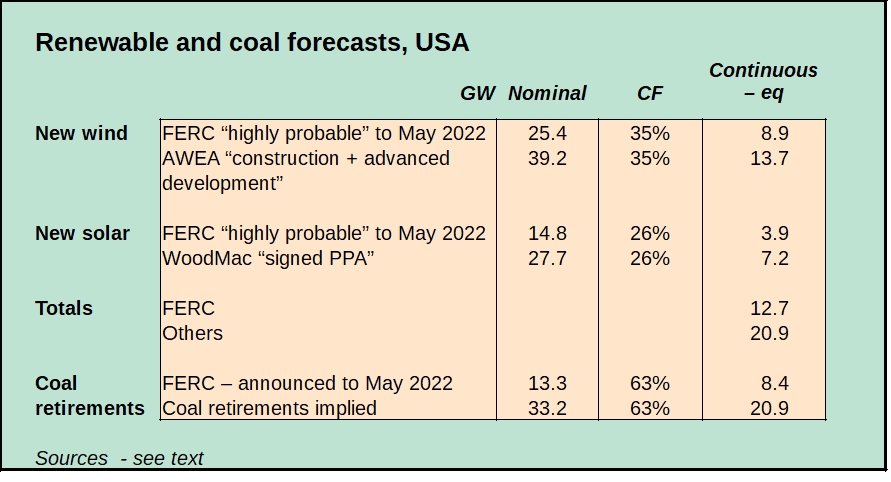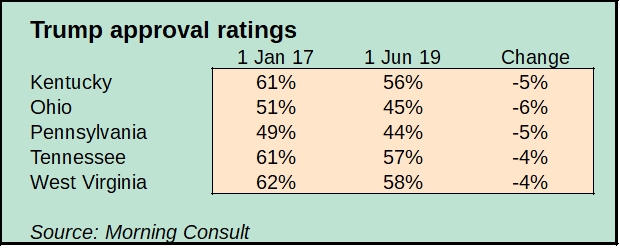In the second of this series of posts, I reported on data from the SEIA and consultants WoodMac that cast doubt on FERC’s forecasts of “highly probable” new solar installation in the USA. I went so far as to characterize these as “politicised rubbish”.
At the time I did not have comparable data for wind. Now I do. In a press release, the American Wind Energy Association (AWEA) reports:
Of the total wind pipeline, 17,213 MW were under construction across 21 states at the end of first quarter. [….] Project developers also reported 21,949 MW of wind capacity in the advanced development stage, which also reached a record level. Projects in advanced development have not yet begun construction but are likely to come online in the near term because they have either signed a long-term contract, placed turbine orders, or are proceeding under utility ownership.
My italics.
The AWEA definition corresponds very closely to the SEIA/WoodMac criterion for solar and to any common-sense interpretation of the term “highly probable”. So FERC have got this badly wrong too.
Putting the data together for your convenience, I get this:

The implied coal retirements in the last line - implied by the AWEA and SEIA/WoodMac data - are based on the assumptions of static demand for electricity, one-for-one substitution of renewables for coal, and no change in the latter’s break-even capacity factor (CF). The continuous-equivalent number for the announced retirements is just reached by applying the fleet average and is probably inaccurate, but it plays no part in the rest of the calculation. Note that old coal plants are inflexible, unlike gas, and don’t contribute much to the needed firming backup for cheap intermittent renewables.
The table also assumes that all the utility projects listed by SEIA/WoodMac and the AWEA will be completed in the three-year horizon used by FERC. This is very likely, though recently solar developers have started signing PPAs with delivery as late as 2023. The CFs for wind and solar are conservative, as technical advances are still raising them.
The estimate therefore has a fair margin of error. But it does strongly suggest that coal retirements of well over twice those already notified to FERC are already baked into the cake, with more on the way.
* * * * * *
Politically, the key factor is how many more coal jobs are lost in the next 15 months, before the 2020 elections. Here the picture is much less clear, but qualitatively similar.
It’s a fairly safe assumption that all the wind and solar farms currently under construction will be working by the election and cutting demand for coal. Since solar is very quick to build once ground is broken, this may imply a large underestimate. Using the same simple methods as in my table, that translates to 11.5 GW of redundant coal generation. The actual coal plant closures may be delayed or anticipated; the impact on mining jobs will be immediate.
The number is in the same ballpark as recent experience. 15 GW of American coal plants closed in 2018, displaced by gas as much as renewables. ( I don’t attempt to take account of gas here, but it’s more bad news for coal.) The acceleration I predicted, and still do, looks as if it will come after the election. However, the now certain job losses, and the equally certain prospect of many more to come, will already be on a sufficient scale to show up Trump’s promises in 2016 to American coal-miners as a cynical fraud.
It looks as if Appalachians generally are slowly getting the message. Trump’s approval ratings in selected states, Morning Consult, for now and at the start of his term:
